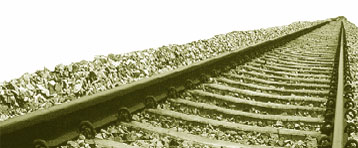On track to disaster
 the Konkan Railways project was supposed to have been India's most ambitious railway project of the post-independence era. But we must ask ourselves how our democratic system allowed a massive fraud of Rs 4,000 crore to be perpetrated? How a few opportunistic technocrats, bureaucrats and politicians could take the people for a ride?
the Konkan Railways project was supposed to have been India's most ambitious railway project of the post-independence era. But we must ask ourselves how our democratic system allowed a massive fraud of Rs 4,000 crore to be perpetrated? How a few opportunistic technocrats, bureaucrats and politicians could take the people for a ride?
The state of the Konkan Railways ( kr) , a project that runs through coastal western India, linking Mumbai to the Konkan region of Goa and Mangalore is deplorable. They called the project a dream but it has turned out to be a nightmare. They said it would be one of the wonders of the world but it has turned into a big blunder. They called it a national project but what we have is a national disaster.
On track to disaster For six days in July 2000, the entire kr was inoperative. Earlier, the Mangala Express from Nizamuddin, Delhi, to Ernakulam, Kerala, had got derailed at Canacona in Goa because of a major landslide. Fortunately, the train ran into the rubble on the track at a slow speed. Seven people were injured. On July 12, 2000, the local media again reported 30,000 cubic metre of earth and rock sliding on to the tracks, pushing them laterally by eight metres. Even as the earthmovers removed the collapsed material, more rubble slid down.
In six days in July 2000, there have been more than 50 rock-falls on the tracks between Khed in Maharashtra and Karwar in Karnataka. The beginning of June 2000 witnessed record rainfall in the Ratnagiri district of Maharashtra. This had come as the first monsoon shock of the year 2000 to the Konkan Railway Corporation ( krc) . Rocks had fallen onto the tracks at Khedshi, Bhoke and Pomendi. Boulders and mud had fallen onto the tracks near the Talwade tunnel in Lanja taluka. A 32-wagon goods train, from Mumbai to Margao, had run into the rubble fallen on the tracks, leading to the derailment of two wagons. The rail route had remained shut for nine hours and all trains running on this line were immediately halted at the nearest stations. In the Khedshi tunnel, water logging and flooding had caused water to enter the train coaches through the doors.
At some places, the embankments were washed away, leaving the tracks and sleepers dangling in the air. Due to the tremendous damage suffered by the kr the rail line was closed to traffic for five days at a stretch.
The krc officials blame it all on the heavy rainfall and the laetrile soil. But are these explanations valid? In the Konkan, this kind of monsoon is a common occurrence. The lateritic soil could have been avoided by planning the route through the hinterland, along the lower contours of the existing terrain. This was the original plan, as given to the krc by the Indian Railways' experts.
B y choosing to ignore the Indian Railway Engineering Code, krc has dug its own grave. My only objection is why should they bury others in it?
Whenever trains pass through a mountainous terrain, it demands building the track by carving out valleys in the mountain formation. This is called cutting. The krc computers were programmed to insert tunnels wherever the cutting depth in mountains exceeded 18 metres. But at one point on the track, in Goa, the krc has constructed a 25-metre cutting because they were afraid to tunnel through the weathered lateritic soil, which gets waterlogged and acts as a water reservoir for the dry season. They have compounded their ignorance and arrogance by ignoring their own computer software.
Now, they claim that the people should expect some failures for five years or so. They know that public memory is short. The krc also knows that its core competence was never railroad construction. It's always been adept at making tall claims, managing public relations and manipulating the media. Corruption and the misuse of public money too have not been beyond their purview.
Incidents or accidents? Where are the krc top brass like E. Shreedharan, Ambi Krishnaswamy Somnathan, S.V. Salelkar and B. Rajaram, those responsible for this entire fiasco? They wielded tremendous authority when they were constructing this abortion of a railroad. They should be made accountable for the disaster. Since the so-called
Related Content
- 2023 global hunger index: the power of youth in shaping food systems
- Using metrics to assess progress towards the Paris agreement’s global goal on adaptation: transparency in adaptation in the agriculture sectors
- Tracking the money for climate adaptation and disaster risk reduction
- Regional drought response plan for the Horn of Africa: 2023
- Adaptation gap report 2022: too little, too slow
- A rapid review of effective financing for policy, implementation and partnerships addressing drought risks
